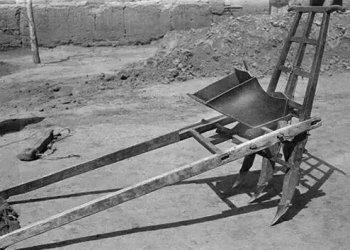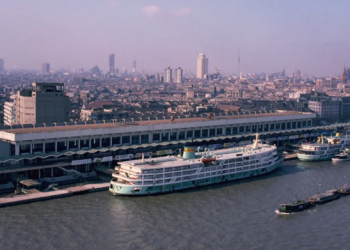In the early 1960s, the world saw a feat that seemed impossible at the time. The task was to carve a canal through the steep cliffs of the Taihang Mountains using nothing but human strength. The people of Lin County, now Linzhou, were faced with no funding, no machinery, and a severe shortage of food. All they had were their hands, iron hammers, steel drills, and an unwavering determination.
Between 1960 and 1969, a monumental engineering project was born—the Red Flag Canal. The project aimed to divert water from the Zhang River to the arid lands of Lin County. With the mission to level 1,250 mountain peaks, build 152 aqueducts, and drill through 211 tunnels, the project spanned an incredible 1,500 kilometers.
Was this an impossible task? No, it was a stunning accomplishment by the people of Lin County!
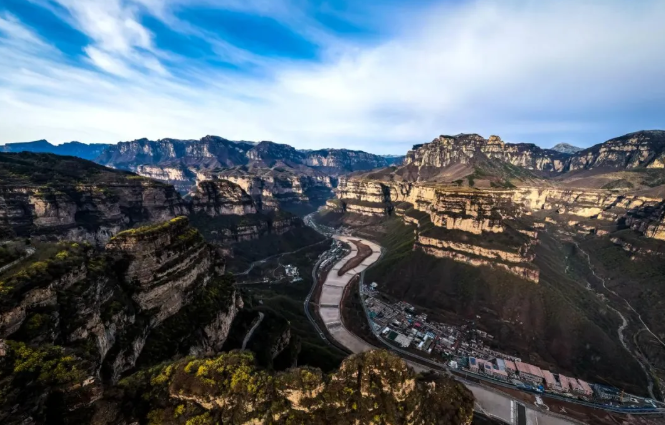
The land of Lin County had been suffering from drought for centuries. From 1436 to 1949, the region endured over 100 years of drought, leaving the fields cracked and the people desperate for water. “Old Lin County was a barren land, its slopes stripped of vegetation, the rivers dried up, and the crops would not yield in times of rain or drought,” locals would say.
In 1960, a young county official named Yang Gui made a vow that would change history. He stood at the foot of Taihang Mountain and said, “If the Foolish Old Man can move mountains, why can’t we dig a canal?” The people of Lin County, despite the lack of national funding, were determined to complete this monumental task on their own. They pledged to bring their own food and labor, making it clear that this was an issue that concerned generations to come.
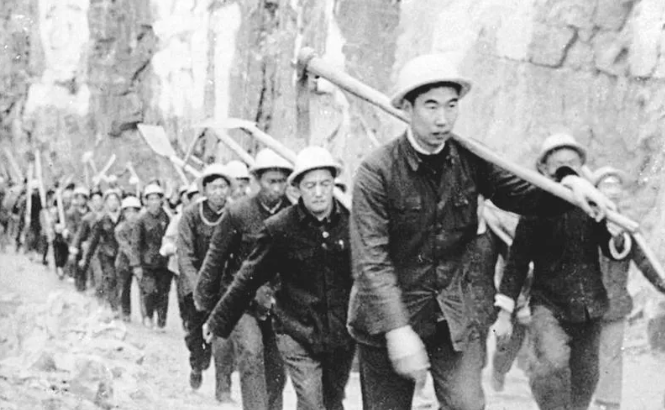
The work began in February 1960, with no machinery, only human strength and determination. The workers used their bodies and hand tools to measure and shape the mountains. The mountains were steep and dangerous, but the people of Lin County pressed on, even as many sacrificed their lives. Workers like Li Gaiyun, who pushed a colleague out of harm’s way, only to be buried by rocks and have his right leg crushed, became symbols of selfless dedication.
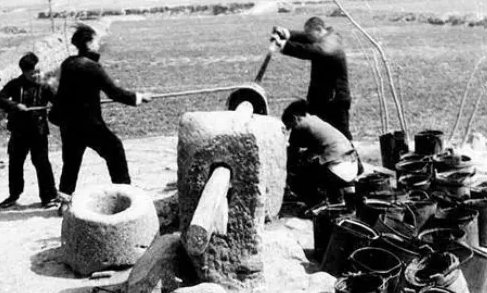
In April 1965, the first phase of the Red Flag Canal was completed when water from the Zhang River finally flowed over the mountains, bringing “sweet water” to Lin County. The local people were moved to tears as they saw the water flow for the first time. Children ran through the waves, celebrating this long-awaited miracle. By 1969, the canal system was fully completed, providing water to 540,000 acres of farmland.

The Red Flag Canal is more than just a hydraulic project; it is a symbol of human perseverance and ingenuity. It is often said that if the soil and stones excavated from the canal could be built into a wall 2 meters high and 3 meters wide, it would stretch across China from the north to the south, linking cities like Guangzhou, Beijing, and Harbin. Behind this monumental feat were 81 heroes who sacrificed their lives. Their names remain etched in the stars reflected in the canal waters.
For decades, the Red Flag Canal has transcended its original purpose. It embodies the spirit of “self-reliance” and continues to inspire the Chinese people today. The canal was not only a marvel of engineering, but also a testament to the indomitable will and spirit of the Lin County people. It is the embodiment of the spirit of the ancient myth of “Yu the Great” taming floods, and it continues to nourish generations.
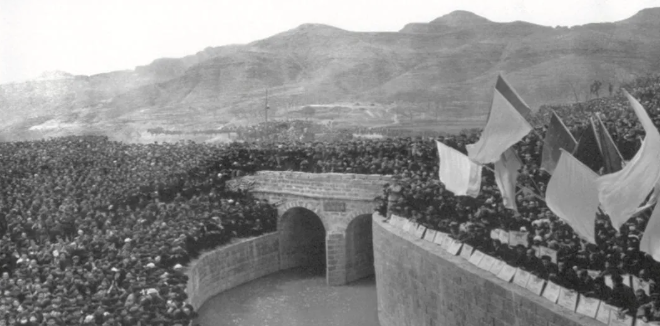
Today, the Red Flag Canal has become a 5A tourist attraction, drawing visitors from all over the world who come to experience its history and marvel at the engineering feats of those who built it. Local towns, like Ren Village, are leveraging the canal’s legacy by developing industries and tourism around the region’s rich resources. From the “Red Flag Canal” themed restaurants to eco-tourism models like “homestay + art,” these villages have become living symbols of rural revitalization.
As the spring winds blow across the Taihang Mountains, the green hills and the deep scars of the past tell the story of struggle and success. The Red Flag Canal flows with the spirit of perseverance, as if written in the rivers themselves. The canal remains a lasting symbol of China’s ability to overcome even the most daunting challenges, as well as a monument to the enduring human spirit that will continue to inspire future generations.
This is the story of the Red Flag Canal: a project born from the mountains, sustained by the strength of human will, and now flowing with the promise of a better future for all.

